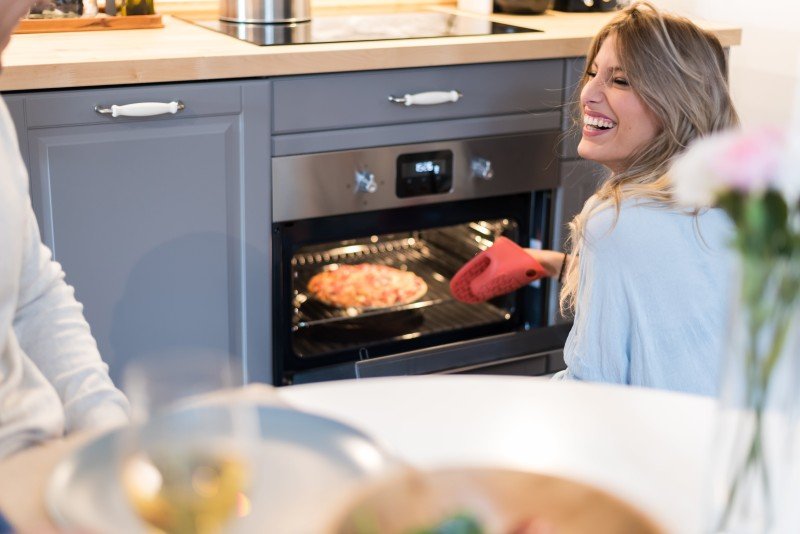Understanding Ovens and Hobs: A Comprehensive Guide
When it comes to cooking home appliances, ovens and hobs are amongst the most essential tools discovered in modern cooking areas. They play pivotal functions in meal preparation, transforming raw active ingredients into tasty dishes. Understanding the differences between different types of ovens and hobs and how to select the ideal one can make a substantial distinction in cooking performance and food quality.
This post explores ovens and hobs in information, supplying insights into their types, functions, advantages, and typical FAQs. Whether you are a seasoned chef or an amateur cook, this details will assist you make informed choices for your cooking requirements.
Kinds of Ovens
Ovens are available in numerous types, each created for particular cooking methods and designs. Here is a detailed take a look at the most common types of ovens:
| Type of Oven | Description | Best For |
|---|
| Standard Oven | Utilizes heating components located at the top and bottom for even cooking. | Baking, roasting, and general cooking |
| Stove | Functions a fan that circulates hot air for fast and even cooking. | Baking pastries and cookies, roasting meats |
| Steam Oven | Utilizes steam to cook food, maintaining wetness and nutrients. | Veggies and fish |
| Microwave | Quickly cooks food utilizing microwave radiation. | Reheating and fast meals |
| Wall Oven | Built directly into the wall for space-saving cooking solutions. | Little kitchen areas and contemporary designs |
| Ability Level | Offers several cooking modes including baking, broiling, and toasting. | Flexible cooking needs |
Kinds of Hobs
Hobs, likewise understood as cooktops, come in numerous types based upon their fuel source and design. Comprehending these alternatives can help in finding the right fit for your kitchen setup:
| Type of Hob | Description | Best For |
|---|
| Gas Hob | Uses gas flames for cooking, offering instant heat control. | Standard cooking methods |
| Electric Hob | Utilizes electric coils or induction aspects to heat pots and pans. | Even heat distribution |
| Induction Hob | Utilizes electromagnetic energy to directly heat up pots, supplying fast and effective cooking. | Energy-efficient cooking |
| Strong Plate Hob | A kind of electric hob with solid plates that takes some time to warm up however keeps heat well. | Sluggish cooking |
| Ceramic Hob | Features a glass-ceramic surface enabling for simple cleaning, with electric heating aspects below. | Visual appeal |
Elements to Consider When Choosing an Oven and Hob
Choosing the best oven and hob combination requires mindful consideration of numerous factors. Below is a list of important aspects to keep in mind:
Cooking Style
- Are you a daily cook or a periodic baker?
- Do you prefer steaming or frying?
Kitchen Size
- What space is available in your kitchen for the appliances?
- Will you require integrated or freestanding models?
Fuel Source
- Do you have access to gas, or would you prefer electric?
- Are you thinking about induction cooking innovation?
Budget plan
- What is your spending plan for buying an oven and hob?
- Are you thinking about a high-end design or a more budget friendly alternative?
Energy Efficiency
- Are you seeking to minimize your energy intake?
- Do you prefer home appliances that feature high-efficiency ratings?
Advantages of Ovens and Hobs
Both ovens and hobs bring distinct benefits to the kitchen. Here's a summary of some benefits:
Ovens:
- Versatility: Able to deal with a wide variety of cooking methods from baking to roasting and broiling.
- Consistent Results: Even heat circulation supplies trusted cooking results.
- Large Capacity: Ideal for big meals and batch cooking.
Hobs:
- Control: Gas hobs use rapid heat changes, helpful for precise cooking.
- Effectiveness: Induction hobs are known for their quicker heat-up energy and times efficiency.
- Independent Cooking: Multiple hobs enable cooking numerous meals all at once.
Picking the ideal ovens and hobs is crucial for anybody seeking to improve their cooking skills and kitchen performance. By understanding the different types of each appliance, along with their advantages and functions, customers can make educated choices that deal with their cooking practices and choices.
As cooking areas progress, so do the innovations surrounding cooking appliances. Purchasing the right mix of an oven and hob can result in better cooking experiences, higher food quality, and even satisfying time spent in the kitchen.
Frequently Asked Questions (FAQs)
What is the distinction between convection and conventional ovens?
- A convection oven utilizes a fan to flow air for even cooking, while a conventional oven relies just on the top and bottom heating aspects.
How do induction hobs work?
- Induction hobs utilize electromagnetic fields to directly heat up pots and pans made of magnetic materials, leading to quicker cooking times and more energy effectiveness.
Are gas hobs more secure than electric hobs?

- Security depends on usage and installation. Gas hobs require appropriate ventilation and can provide a fire danger, while electric hobs may present threats of burns due to their hot surface areas.
Can I bake in a steam oven?
- Yes, a steam oven can be utilized for baking, typically resulting in moister and fluffier baked products, especially breads and pastries.
What should I try to find in a built-in oven?
- Try to find features like capability, cooking modes, energy effectiveness scores, and ease of cleansing.
By thinking about the information and guides supplied in this post, readers can easily navigate the world of ovens and hobs, ensuring that they select the very best appliances to fit their cooking requirements.